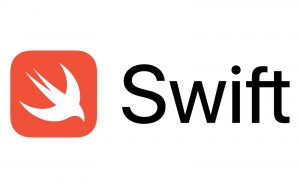Object-Oriented Programming (OOP) is a powerful paradigm that enables developers to organize and structure their code in a more modular and scalable way. Swift, Apple’s modern programming language, fully supports OOP principles, making it a great choice for building robust and maintainable applications. In this tutorial, we’ll explore the fundamentals of OOP in Swift, including classes, objects, inheritance, encapsulation, and polymorphism.
Key Concepts:
- Classes and Objects
- Inheritance
- Encapsulation
- Polymorphism
Classes and Objects
Classes
In Swift, a class is a blueprint for creating objects. It defines properties and methods that characterize any particular type of object. Here’s an example of a simple class in Swift:
class Car {
var brand: String
var model: String
var year: Int
init(brand: String, model: String, year: Int) {
self.brand = brand
self.model = model
self.year = year
}
func drive() {
print("The \(brand) \(model) is now driving.")
}
}Objects
An object is an instance of a class. It represents a specific entity with its own unique state and behavior. Here’s how you can create objects of the Car class:
let myCar = Car(brand: "Toyota", model: "Camry", year: 2020)
let yourCar = Car(brand: "Honda", model: "Accord", year: 2019)
myCar.drive() // Output: The Toyota Camry is now driving.
yourCar.drive() // Output: The Honda Accord is now driving.Inheritance
Inheritance is a mechanism in OOP that allows a class to inherit properties and methods from another class. The class that inherits from another class is called a subclass, and the class it inherits from is called a superclass. Here’s an example of inheritance in Swift:
class ElectricCar: Car {
var batteryCapacity: Double
init(brand: String, model: String, year: Int, batteryCapacity: Double) {
self.batteryCapacity = batteryCapacity
super.init(brand: brand, model: model, year: year)
}
override func drive() {
print("The \(brand) \(model) is now driving silently with an electric motor.")
}
}In this example, ElectricCar is a subclass of Car. It inherits the brand, model, and year properties from the Car class and adds its own property batteryCapacity. It also overrides the drive method to provide a different implementation.
Encapsulation
Encapsulation is the bundling of data and methods that operate on the data into a single unit, called a class. It hides the internal state of an object and only exposes the necessary functionality through methods. Swift provides access control modifiers to implement encapsulation:
public: Accessible from any source file in the same module or another module that imports the defining module.internal: Default access level, accessible within the same module.private: Accessible only within the same source file that contains the type it’s declared in.
Here’s an example demonstrating encapsulation using access control modifiers:
class BankAccount {
private var balance: Double
init(initialBalance: Double) {
self.balance = initialBalance
}
func deposit(amount: Double) {
balance += amount
}
func withdraw(amount: Double) {
if amount <= balance {
balance -= amount
} else {
print("Insufficient funds")
}
}
func getBalance() -> Double {
return balance
}
}In this example, the balance property is declared as private, ensuring that it can only be accessed and modified within the BankAccount class.
Polymorphism
Polymorphism allows objects of different classes to be treated as objects of a common superclass. It enables flexibility and extensibility in your code by allowing you to write code that operates on objects of a superclass, and it automatically applies to any subclasses of that superclass. Here’s an example of polymorphism in Swift:
func describeCar(car: Car) {
print("This car is a \(car.year) \(car.brand) \(car.model)")
}
let electricCar = ElectricCar(brand: "Tesla", model: "Model S", year: 2022, batteryCapacity: 100.0)
describeCar(car: electricCar) // Output: This car is a 2022 Tesla Model SIn this example, the describeCar function takes a Car object as a parameter. Despite passing an ElectricCar object to it, polymorphism allows the function to treat it as a Car, demonstrating the flexibility of object-oriented programming.
Conclusion
Congratulations! You’ve now mastered the basics of Object-Oriented Programming (OOP) in Swift. By understanding and applying the concepts of classes, objects, inheritance, encapsulation, and polymorphism, you can write cleaner, more modular, and maintainable code for your Swift projects. Keep practicing and exploring more advanced topics to become a proficient Swift developer. Happy coding!


